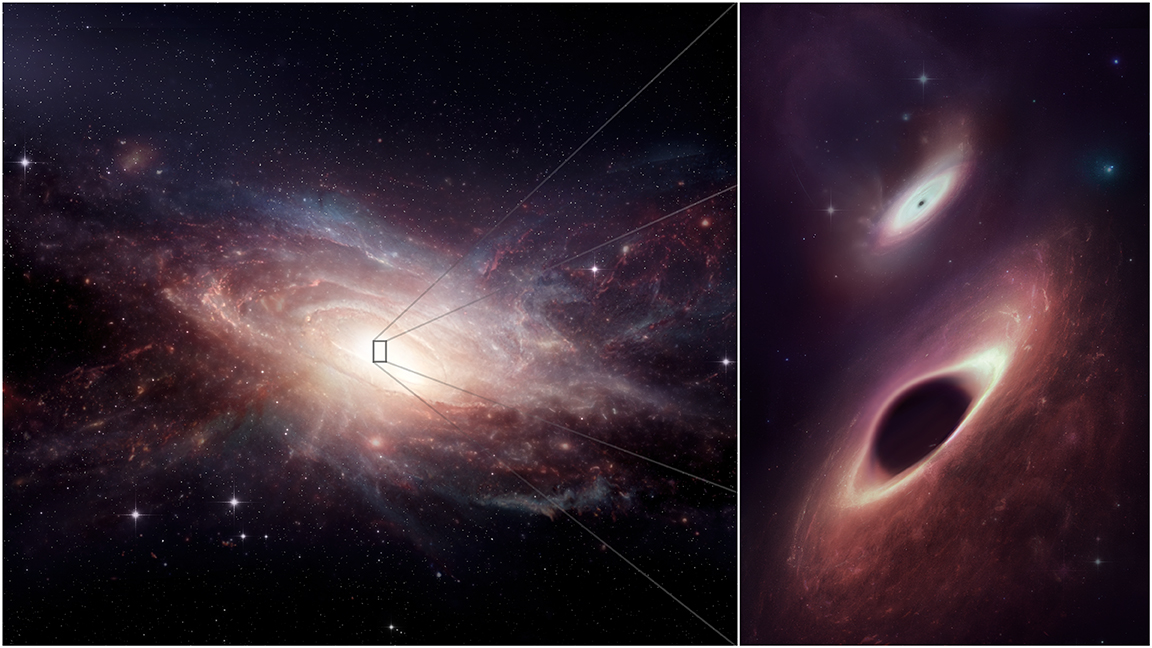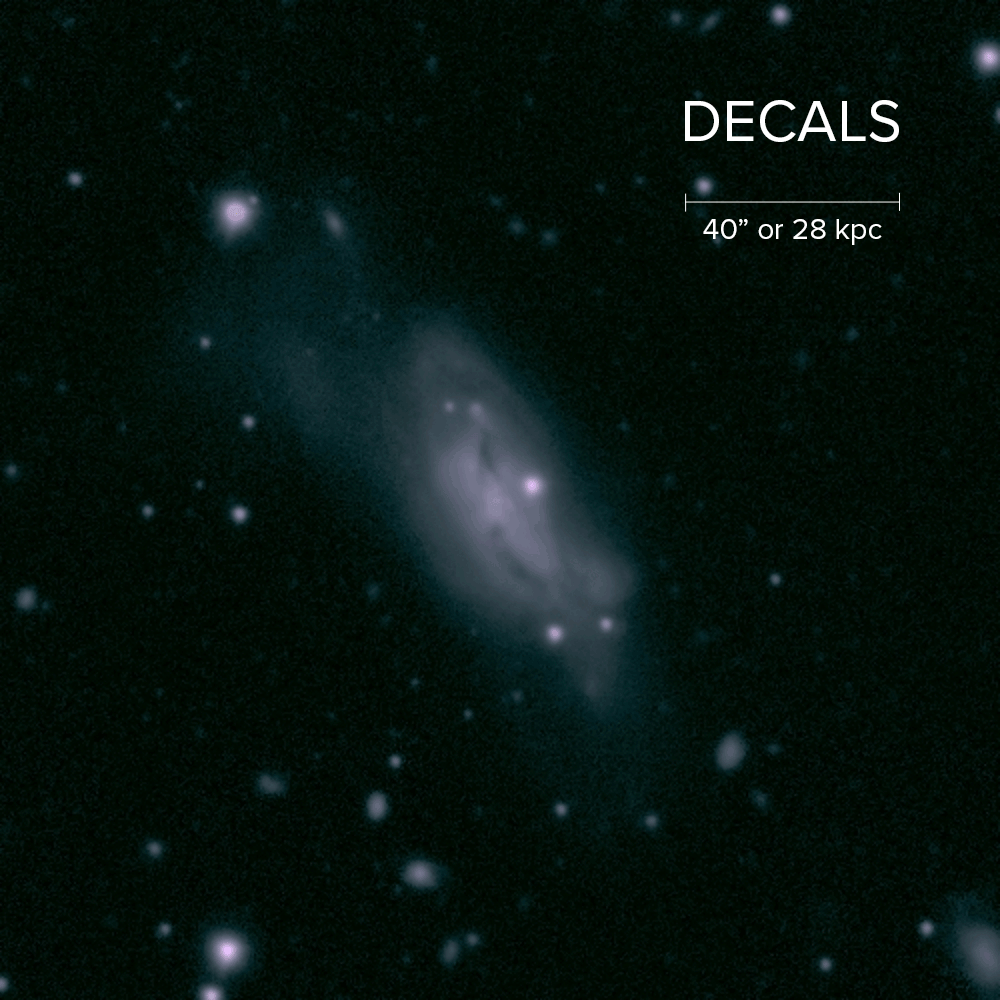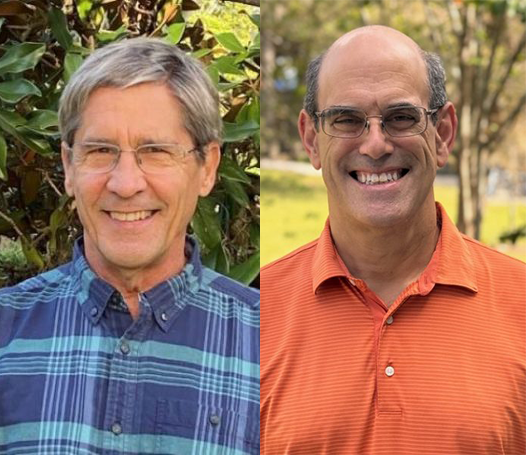
Scientists Find Black Holes Tangled in Cosmic Dance
UF astrophysicist Laura Blecha aids in discovery at the heart of a galactic merger
A dark secret has been uncovered: Not one, but two supermassive black holes hide in the dusty chaos of a pair of merging galaxies. The colossal duo swirls together at the heart of the collision, a mere 750 light-years apart. While the distance may sound like a far stretch, it’s the first time that scientists have observed two of these monstrous objects in multiple wavelengths at such close proximity to one another. As the Milky Way galaxy faces an impending merger with neighboring Andromeda, the findings offer a revolutionary chance to explore our own fate.
The new research also reveals that these pairs of black holes — and the colliding galaxies that host them — may be more commonplace throughout the Universe than previously understood. The results of the study, co-authored by UF astrophysicist Laura Blecha, were published today in The Astrophysical Journal Letters and presented at the 241st meeting of the American Astronomical Society (AAS) in Seattle, Washington.
Video courtesy of ALMA (ESO/NAOJ/NRAO), M. Koss et al (Eureka Scientific), S. Dagnello (NRAO/AUI/NSF)
While supermassive black holes sit at the heart of most galaxies, the study provides a rare glimpse of a binary (or double) black hole system near the end stages of a galaxy merger. Previous research has mainly revolved around formative stages since end stages are frequently observed at greater distances, proving more challenging to study.
“Finding supermassive black holes in close pairs has been surprisingly difficult thus far, and it’s also very challenging to create accurate simulations of black hole pair formation during galaxy collisions,” Blecha said.

Blecha, whose research focuses on making predictions for supermassive black hole and galaxy evolution, builds simulations to explore their formation and growth. The attainment of empirical data gathered from this study, she says, will be key for constraining her models. And it could be just the beginning — the team posits that since galactic mergers are much more common in the distant Universe, supermassive black hole pairs will also be found more frequently there.
At just 500 million light-years from Earth, the pair of merging galaxies known as UGC4211 offered an ideal setting for the research team to study the phenomena. The scientists gained a clearer picture of the story with use of tools employing multiple wavelengths: They paired the highly sensitive Atacama Large Millimeter/submillimeter Array (ALMA), an international observatory co-operated by the U.S. National Science Foundation’s National Radio Astronomy Observatory (NRAO) with observations from other powerful telescopes to offer detailed images.
Binary black holes like the pair discovered within UGC4211 are considered prime candidates for the study of gravitational waves, or ‘ripples’ in spacetime, which allow scientists to see parts of the universe once thought to be invisible. “These objects are millions to billions of times the mass of the Sun, and when two of them come together and merge, they create extremely powerful ripples in the fabric of spacetime that can be detected across most of the observable Universe,” Blecha said.

The emerging study of gravitational waves from black hole mergers has already changed the world of astronomy, Blecha explains. She predicts detections from supermassive black holes will be the new frontier in space exploration. By studying the features of these waves, it has become possible to obtain clues to the speed, mass, and rotation of these cosmic phenomena.
“Discoveries of close supermassive black hole pairs like this one help us to constrain these uncertainties, and once gravitational waves from supermassive black holes are detected, the combination of gravitational-wave and electromagnetic data will provide a much richer picture of how these massive objects form and evolve,” Blecha said.
Although black holes continue to challenge discovery, Blecha hopes the newly released findings will pave the way for scientists to untangle some of the most mind-bending mysteries of the Universe — and ultimately push the limits of our understanding of space and time.
Read the full study here.


